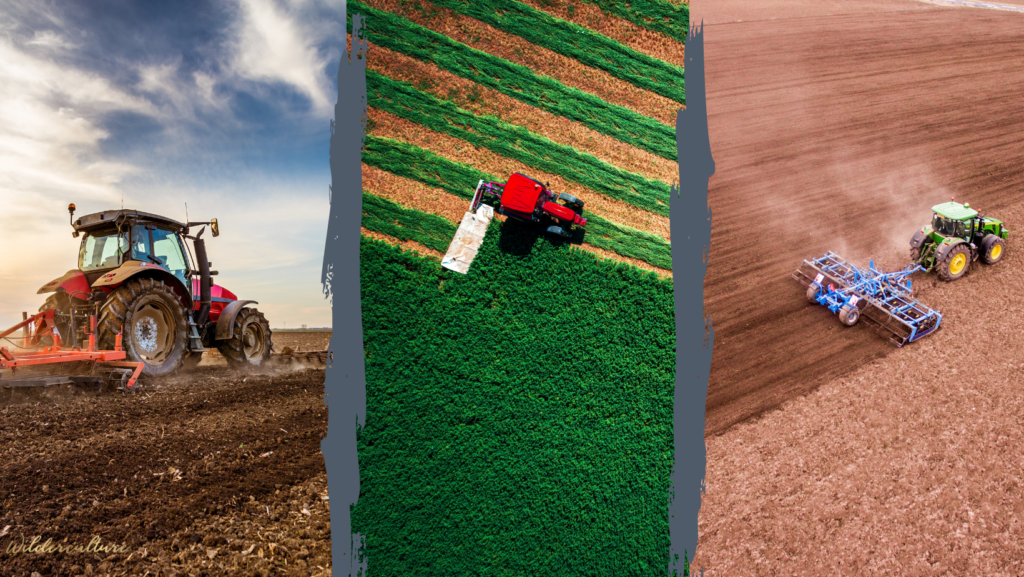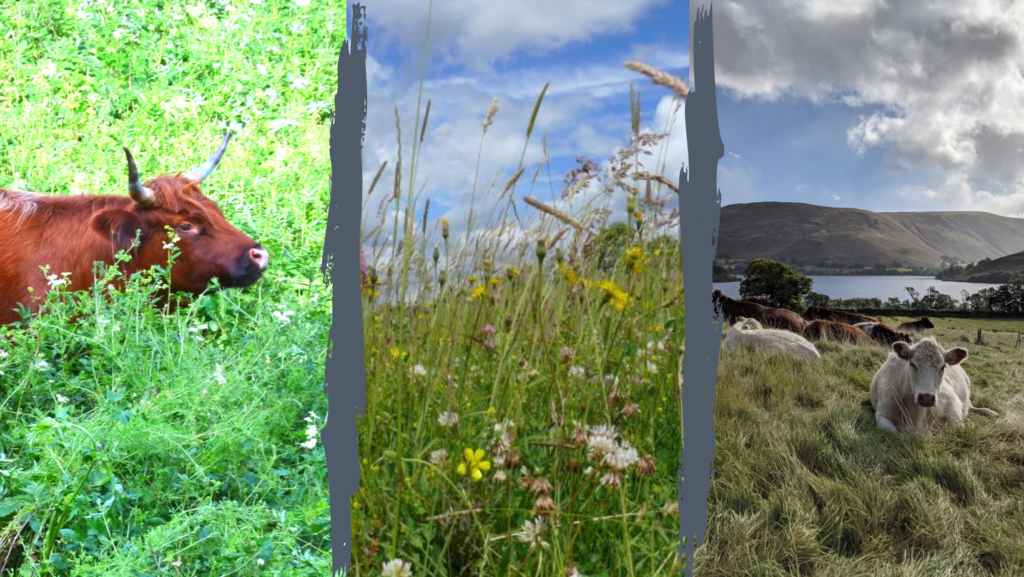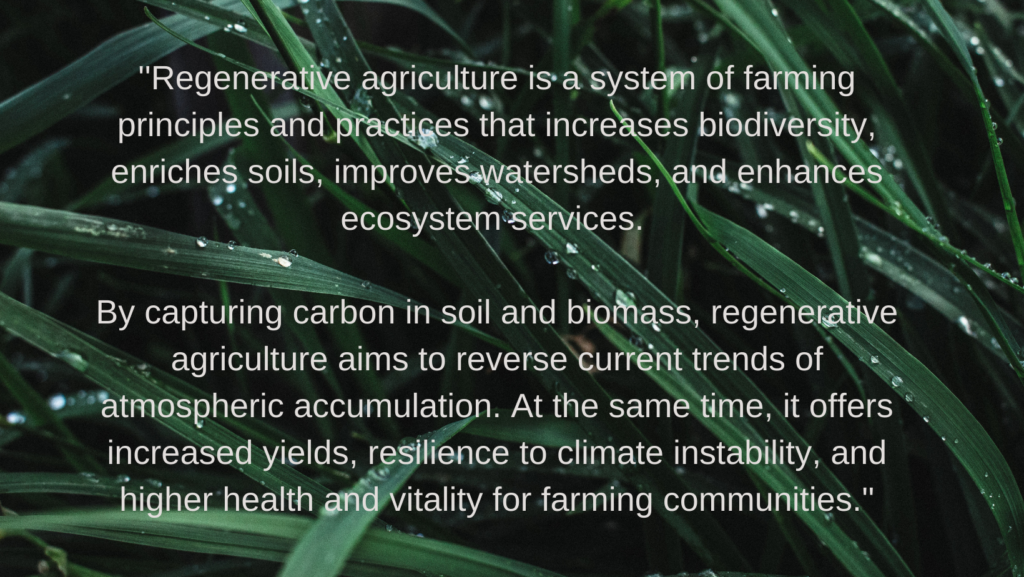What is regenerative agriculture?
I could write an entire book driving home humanity’s highly vulnerable predicament.
The multiple, interrelated, and potentially catastrophic threats of climate change, biodiversity collapse, highly insecure supply chains and spiralling input costs need little introduction and have reached a fever pitch.
These threats to humanity are entirely self-created and speak nothing about the diabolical and unforgivable war we have waged on the natural world and its non-human species. I have dedicated my life to trying to help rectify these issues in any small way I can.
Dealing with the pain, frustration and despair that is inevitable working on these so-called ‘wicked’ problems has taken me to the ‘edge’ on many occasions, and I certainly feel like I’m staring over the precipice right now!
Such anger and disbelief in humanity’s inability to recognise and act on its imminent existential risks are summed up with brilliant genius in the recent film ‘don’t look up.’
How we ended up in this mess – the only species I know of who has actively engaged in the destruction of its own habitat is a long and complex tale and is as old as humans themselves.

This destruction accelerated during the age of enlightenment when people started to think that everything must be separated to be understood in its individual parts and that all life works just like a machine.
This separation of humans from nature, of the masculine from the feminine and the inner from the outer, has really gathered pace over the last century and has led to the conclusion that ‘nature’ is not an animate living organism of which we were part, but rather an economically valuable bank of resources to be plundered and profited from.
Today we surely must be reaching ‘peak separation?’ We have even managed to turn the seemingly noble goal of cooling our climate into a new economic mechanistic model to be quantified, calculated and traded.
But here we are, and we now face a choice. We can sit back and trust that technology, science and our governments will save us – with the distinct probability that we find out too late that they won’t. Or to take action NOW as concerned and informed citizens and build a new and functional society.
How and what we eat is at the very foundation of a healthy society. We have depleted our farmland well beyond the point that simply ‘sustaining’ it is enough to support humanity’s future on this planet – we need to regenerate our land, and fast!
In modern society – especially the West – we have been in the mechanistic, rational paradigm for so long we have an underdeveloped capacity to work with complex systems.
We can do complicated to an utterly mind-boggling level. We can land spacecraft on the moon and design robots and computers so clever that they might just take over the world someday. But, on the other hand, if you ask most western scientists to study or manage a complex living system where everything is interconnected, intertwined, in flow and flux, where the combination of those individual parts equals more than their sum, and we modern humans are utterly useless.
And this is precisely the problem when dealing with the healthy, complex, self-organising ecosystems that were once our farmland. So we need to ‘de-nature’ it in order to tame, control, understand and then exploit it.

For centuries, society thrived off the biological bank account of abundant fertility and deep layers of carbon. Unfortunately, the fertility has been used, washed out, or blown away. And the carbon that was locked up in the soils is causing havoc in the atmosphere.
The bank account is empty, and we are deep into the red.
Our exploited and simplified ecosystems can no longer store water, maintain a stable, cool climate or naturally balance out pests and diseases – they can barely feed us without high levels of harmful and expensive artificial inputs.
Nature isn’t like a machine, and reducing it to such is a catastrophic mistake – as we are now finding out!
Sustainable agriculture or ‘doing less harm’ isn’t going to fix this thing. Instead, we must actively regenerate our functional climate, cooling biodiverse ecosystems and rebuild our soils.

This ‘regeneration’ is precisely what regenerative agriculture can offer.
In regenerative agriculture, we take an agroecological approach which means we mimic nature and ecosystems with our management instead of trying to tame and control them. Natural systems can build soil and resources from nothing – it’s what they do if we don’t interfere. We call it ecological succession – it ‘regenerates’ with no costly inputs required.
These healthy natural ecosystems that run on sunshine, rainfall, carbon and nitrogen from the atmosphere and the minerals from the geology can outproduce the biomass output of even our most advanced agriculture systems. Moreover, they do this with zero inputs and without our command or control. We can witness these processes driven by natural intelligence without having to reduce and understand every minute interaction.
Pests and diseases are reduced and balanced out because the system is complex, self-organising and is always trying to advance and adapt to its conditions.
In regenerative agriculture, we follow the principles of how natural systems function and use holistic management to apply the tools available to us to enhance the ecosystem’s processes – an agroecological approach.
Tera Genesis says it this way;

This sounds relatively straightforward, doesn’t it? After all, nature manages it seemingly without effort. So why aren’t all farmers doing it?
The problem is that regenerative agriculture is landing in a still highly rational, reductionist, science-worshipping, and mechanised world. To truly adopt regenerative agriculture, we need to be able to shift from a mechanistic command and control mindset focused on efficiencies and specialisation to one which can work with and as part of nature.
For regenerative agriculture to work fully, we need to adopt the practices and adopt the ability to think like and work within complex self-organising systems.
If we don’t embrace the philosophy and evolve our thinking to a more holistic capacity, we will just go down a new reductionist rabbit hole in the name of regenerative agriculture.
For instance, we might try to focus on – at a microscopic level – more and more complicated scientific interactions of soil chemistry and biology.
We will develop and be distracted by ever more complicated, smart and computerised technology that allows us to avoid disturbing the soil.
We could come up with specialised hybridised plant species that are ‘better’ than the native ones.
We might even develop cocktails of specific soil organisms that perform certain helpful tasks like taking up methane, increasing carbon sequestration or killing pathogenic bacteria.
Oh, wait!!
In order to truly address the root cause of how we ended up in this ecological apocalypse and evolve to a point where we will NEVER again perform ecocide on our planet and genocide on our own species, we need to ensure we transcend the worldview that drove us to those actions in the first place.
This change of mindset must happen alongside the also critical application of the practices that will regenerate soil, increase biodiversity and restore the cooling functions of our planet.
In regenerative agriculture, to avoid this trap, we study and work with the principles and processes of these ecosystems so we can design agroecological systems where the excess food and fibre can be sold for profit. We mustn’t try and reduce and simplify, command and control and inadvertently limit the capacity of the whole system function.
Farmers often say;
‘But how do you know if it will work here?’
I reply;
‘If nature works where you farm, regenerative agriculture can work too’
Nature doesn’t look the same everywhere and it adapts itself so it can be resilient and sustain itself in the unique set of conditions it finds itself. So we have to learn to work with rather than impose our will upon it.
Our job as regenerative farmers is to design a system that suits our unique environment and supports the people involved, and sometimes that may not look exactly like how you farm now. But, if we get this right, we can sustain or increase productive output and remove the costly inputs hopefully leading to greater resilience and profitability.

Designing and implementing a genuinely self-sustaining regenerative system takes time to evolve and continual adaptation in response to feedback. So we can only know we are actually regenerating the ecosystem by measuring the outcomes we achieve as we progress rather than simply following a set of standards or prescribed rules and claiming we are ‘regenerative’.
Because regenerative agriculture is a principle-based approach, a tick box prescriptive way of verifying regenerative farming runs counter to the ethos of regeneration.
Regenerative agriculture is more than regenerating ecological outcomes too. A regenerative system must be financially profitable and enhance people’s lives.
Simply copying practices from other regenerative practitioners may help build soil and increase biodiversity. Still, it will never bring the full synergistic and emergent benefits of managing holistically as an integral part of our ecosystem.
We must work hard as regenerative professionals to train farmers in the principles of ecological function and support them to develop their intrinsic capacity to work with complexity rather than act as a conventional ‘advisor’ and tell people how best to copy other farmers’ practices.
Regenerative agriculture is one of most exciting and promising solutions for our multi-faceted, systemic and potentially catastrophic global problems.
We have one opportunity to ensure that we adopt this hopeful solution in a way that is true to the principles of emergent ecological regeneration.
Let’s not mess it up this time.
